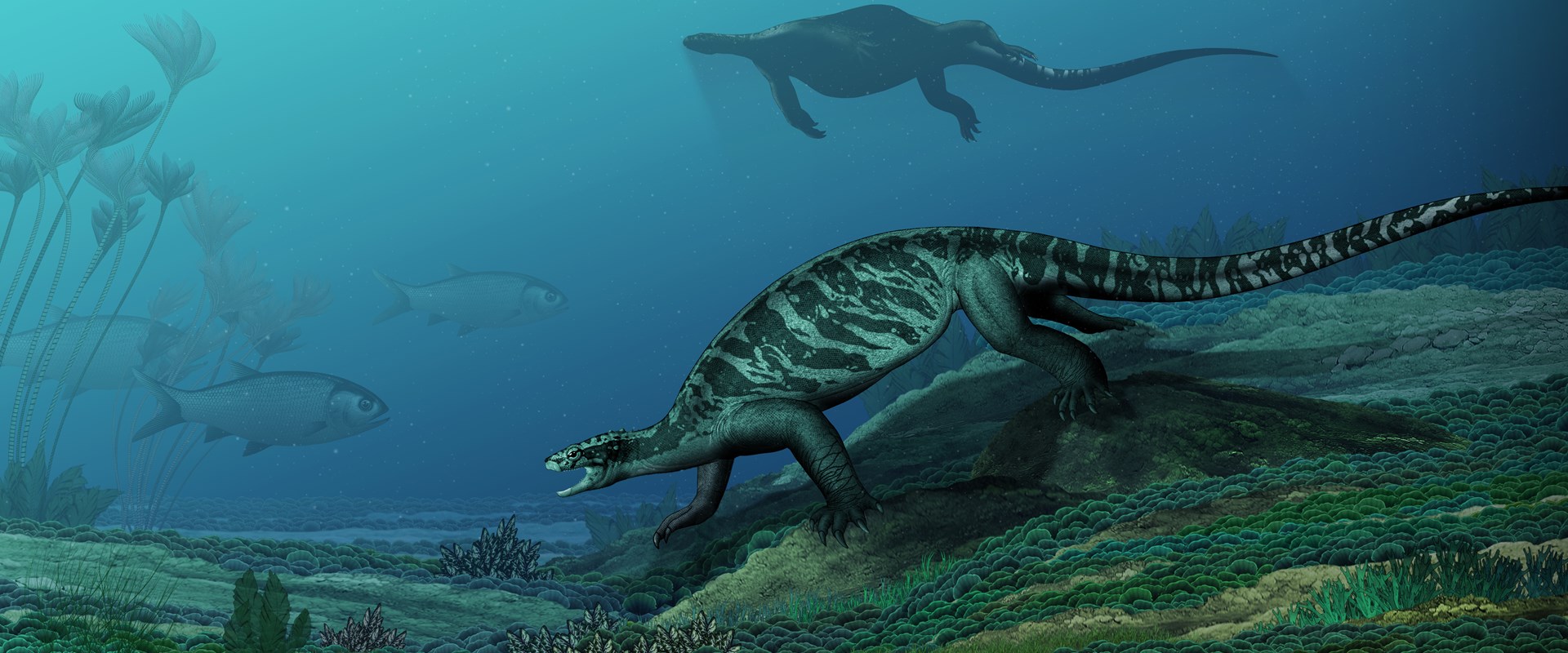A fossilised turtle found in China is helping scientists to fill a key gap in their understanding of the evolution of the species. At 228 million years old, the fossil shows the early stages of the development of this group. The discovery is detailed in a new paper published in Nature.
The 2.3m-long skeleton is nearly complete and was discovered in Guizhou Province, southern China. Its discovery reveals a complex early history of turtles. There is good evidence to indicate that the snout of the new turtle was developed into a beak covered with a thin horny sheath, like so many modern-day turtles.
Dr Nick Fraser, Keeper of Natural Sciences at National Museums Scotland co-authored the study with colleagues at the Chinese Academy of Sciences, the Field Museum of Natural History and the Canadian Museum of Nature.
Although it lacks the carapace and plastron (shell) that is so characteristic of a turtle, the ‘scaffolding’ for the building of the shell is clearly in place. The extremely broad ribs are spread out to the sides forming a wide, oval-shaped body just like a modern-day turtle.
Dr Nick Fraser, Keeper of Natural Sciences at National Museums Scotland commented:
“This impressively large fossil is a very exciting discovery that gives us another piece in the puzzle of turtle evolution. It shows that early turtle evolution was not a straightforward, step-by-step accumulation of unique characteristics but was a much more complex series of events that we are only just beginning to unravel.”
When Dr Fraser first saw the fossil, it was still encased completely in rock, and only the vague outline of the body could be seen:
“Even then it was clear that this was a bit of a monster and unlike anything else I had seen in these very rich deposits. A turtle was just one of many things that went through my mind, but I was truly stunned when I saw the whole fossil fully prepared”.
The international team behind the study believes the new form was probably an inhabitant of coastal waters foraging on land as well as in the water, searching the mud along the shore using its powerful limbs in a similar way to many living pond turtles.
Further information and images from: Alice Wyllie, Susan Gray or Bruce Blacklaw, National Museums Scotland Press Office, on 0131 247 4288 or a.wyllie@nms.ac.uk
Notes to editors
-
National Museums Scotland is one of the leading museum groups in the UK and Europe and it looks after collections of national and international importance. The organisation provides loans, partnerships, research and training in Scotland and internationally. Our individual museums are the National Museum of Scotland, the National Museum of Flight, the National Museum of Rural Life and the National War Museum. The National Museums Collection Centre in Edinburgh houses conservation and research facilities as well as collections not currently on display.
-
Twitter: @NtlMuseumsScot
-
Facebook: facebook.com/NationalMuseumsScotland
-
Instagram: @NationalMuseumsScotland
-
Bheireadh Oifis nam Meadhanan eadar-theangachadh Gàidhlig den bhrath-naidheachd seachad do bhuidhinn mheadhanan bharantaichte. Cuiribh fios do dh'Oifis nam Meadhanan airson bruidhinn air cinn-latha freagarrach.

